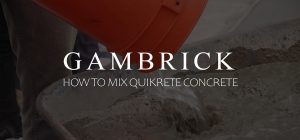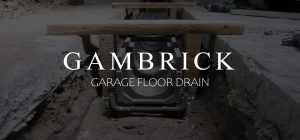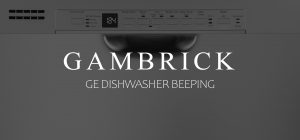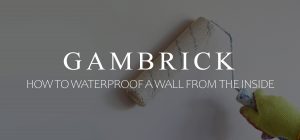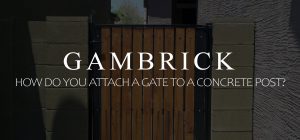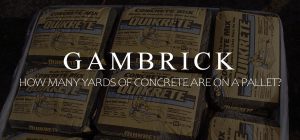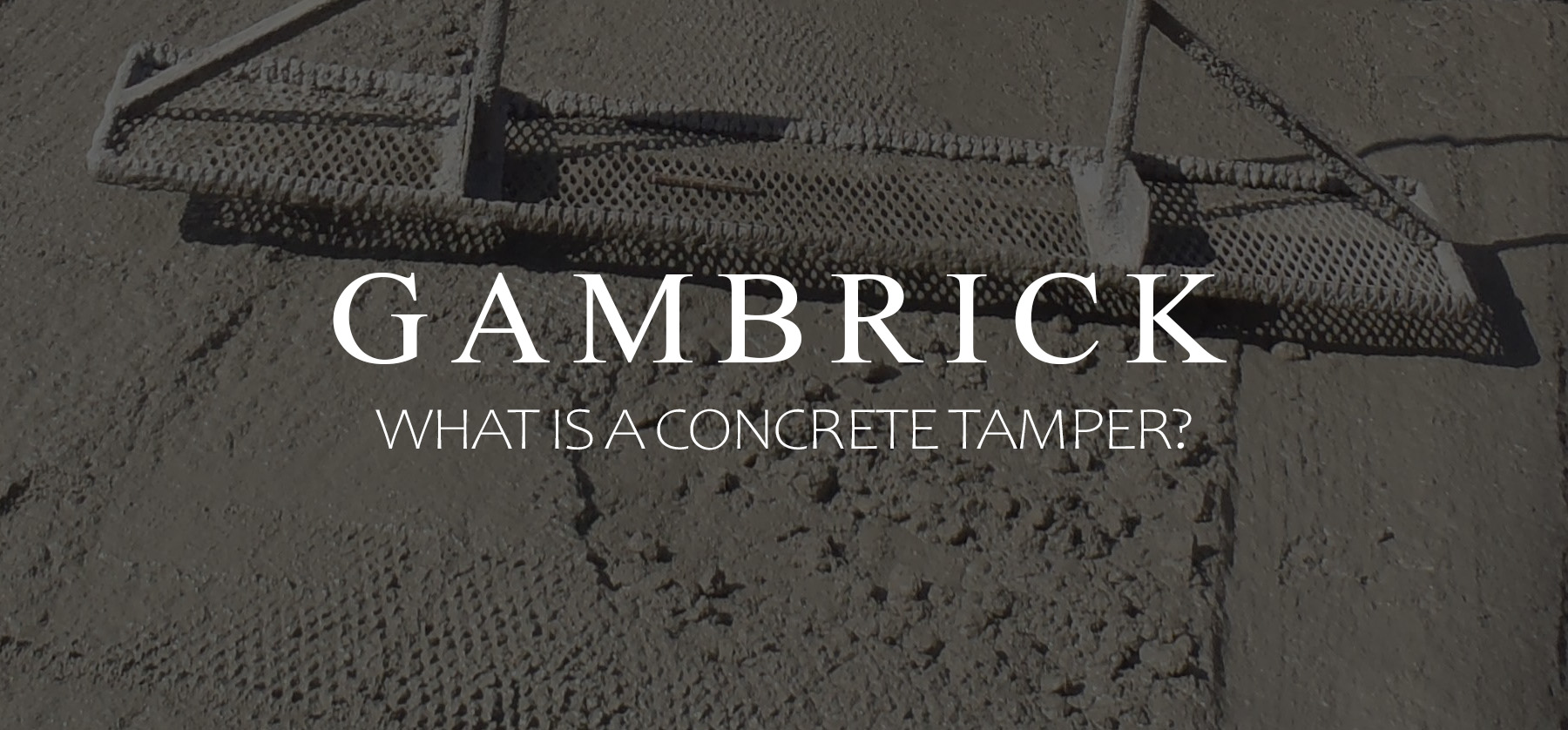
What Is A Concrete Tamper?
A Concrete Tamper, a.k.a. Jitterbug, is a hand tool that pushes the coarse aggregate (stone) down below the surface, which consolidates the concrete. I’ve been a mason for over 25 years and can tell you firsthand how important tamping your slab is. Tamping is one of the last finishing steps masons do to a concrete slab just before troweling and floating the surface smooth. It compacts low slump concrete mixes or mixes with large stones while it’s still wet. The process makes concrete stronger and more durable with a smoother surface.
If tamping isn’t done when required, the concrete could be weaker, less durable and stones could show on the surface. But tamping isn’t needed on concrete with small stones or high slump because the aggregate sinks naturally.
Masons stand in the wet concrete wearing rubber boots and pat the surface repeatedly with the tamper. Tamping is done in straight lines up and down the slab similar to cutting grass. When one row is complete, masons start the next row. This is repeated until the entire slab is tamped at least once. If sections need more tamping it can be done again, but typically one pass is enough.
As masons tamp and walk through the wet concrete, they cause depressions with their feet. These voids naturally fill back in and level off as the surface is tamped.
Roller tempers are also available which are a bit easier to use but less effective on some concrete. The advantage they have when compared to traditional jitterbugs is that you can tamp the concrete while standing outside the forms.
Tampers are an essential masonry tool along with trowels, floats, screeds, sponges, concrete nails, shovels, hoes, a wheel barrow, string, levels, concrete blankets, and basic hand tools.

What Is A Jitterbug?
A jitterbug is another name for a concrete tamper or concrete tamping tool. A jitterbig is a hand tool that pushes the coarse aggregate (stone) down below the surface by tamping it up and down on the concrete. Tamping is one of the last steps masons do to finish a concrete slab just before troweling and floating. It’s done to compact low slump concrete mixes or mixes with large stones while it’s still wet. The process makes concrete stronger and more durable with a smoother surface.
The jitterbug pushes stones down below the concrete surface with pressure. If the stones are left high, masons wouldn’t be able to trowel the slab smooth.
When concrete isn’t tamped properly, it can be weaker and prone to cracking. If cracks form, fill them immediately with a concrete crack filler to prevent them from getting worse.
Masons stand in the wet concrete wearing rubber boots and pat the surface repeatedly with the jitterbug. Tamping is done in straight lines up and down the slab similar to cutting grass.
When one row is complete, masons start the next row. This is repeated until the entire slab is tamped at least once. If sections need more tamping it can be done again, but typically one pass is enough.
As masons tamp and walk through the wet concrete, they cause depressions with their feet. These voids usually fill back in and level off as the surface is tamped.
When you pour concrete with large stones or a low slump, it’s important to tamp the concrete with a jitterbug. Without tamping, the slab will be weaker, less durable and will show stones on the surface.
If you pour concrete with small stones or high slump, the stones may fall below the surface naturally, making tamping unnecessary.
Is Tamping Concrete Necessary?
Tamping a concrete slab consolidates the concrete making it stronger and more durable with a smoother finish. It pushes large stones down below the surface so the concrete can be troweled smooth. It’s a necessary process when the concrete mix contains large stones or a low slump. But it isn’t always needed. If the concrete contains small stones that fall naturally or has certain additives, tamping isn’t needed and can actually weaken the concrete.
Some concrete mixes contain additives that make tamping an unnecessary step. You should check with your ready mix concrete supplier to find out if compacting is required. If compacting is required, use a tamper (jitterbug) or roller tamper to press down on the concrete.
Concrete mixes with small stones should not be tamped because the aggregate will fall naturally. When concrete with small coarse aggregate is tamped, the stones are pressed too deep into the concrete because they fall naturally on their own. This creates a layer on top of the slab that contains no aggregate and too much cement. The result will be a weaker slab that’s prone to surface cracks and deterioration.
Concrete mixes with a high slump generally do not need tamping. The slump of a concrete mix refers to how workable or fluid the mix is. High slump concrete mixes usually contain additives that maximize flowability without sacrificing strength by adding water at the jobsite. These high slump, high strength are created by including superplasticizers inside the mix. Because of how high the slump is, aggregate typically falls below the surface naturally so it doesn’t need additional tamping.
To know if your concrete needs tamping, ask the manufacturer or closely inspect the aggregate to see if it’s sinking naturally or sitting on the surface.
How Do You Tamp Concrete?
Concrete is tamped down with a jitterbug while standing inside the wet slab. Masons walk up and down the slab a row at a time wearing rubber boots as they pat the concrete with the jitterbug. Once a row is tamped they start tamping the next row. It process looks similar to cutting grass. Walking in wet concrete leaves voids behind which are filled and tamped as the mason walks to a new location.
Use the jitterbug to pat the concrete repeatedly with moderate pressure. Don’t hit the concrete hard or you’ll force the stones too deep or make the surface uneven.
If you’re using a roller tamper the general process is the same. Roll one row at a time until the entire slab is tamped. The major difference between a roller tamper and a jitterbug is that rollers don’t require pressure, all you do is roll them along the concrete surface, and you can do it from outside the slab using long poles.
- Tamping concrete helps distribute the aggregate throughout the concrete which results in a stronger, more durable slab.
- Concrete roller tampers are weighted so you simply drag them along the surface from one row to the next.
- Dip the tamper into a bucket of water occasionally to prevent it from sticking to the concrete.
Once you’ve finished tamping a row of concrete, turn around and continue tamping in the opposite direction. Repeat until you’ve finished the entire surface.
- Always walk backward at all times and use the tamper to repair the voids created by your feet.
- If you make a mistake, repair the concrete and go over it again with the tamper.
Once tamping is complete, you can move on to floating the surface smooth and using other finish tools like trowels and edgers.
What Does It Mean To Tamp Concrete?
Tamping concrete is when you repeatedly pat the surface of a wet concrete slab to push stones down below the surface. This is done with a tamper (jitterbug tool) or a roller tamper. Masons walk inside the wet concrete wearing rubber boots as they pat the slab with the tamper. The they tamp the entire slab working in up and down rows similar to how grass is cut. As they tamp, the voids created by their feet are filled in and tamped down. Each section of a slab is tamped down at least once.
Roller tampers are not as effective as a traditional tamper but they can be used without walking in the concrete.
What Is The Purpose Of A Jitterbug For Concrete?
Tamping concrete is when you repeatedly pat the surface of a wet concrete slab to push stones down below the surface. This is done with a jitterbug (tamper tool) or a roller tamper. Masons walk inside the wet concrete wearing rubber boots as they pat the slab with the jitterbug. The they tamp the entire slab working in up and down rows similar to how grass is cut. As they tamp, the voids created by their feet are filled in and tamped down. Each section of a slab is tamped down with the jitterbug at least once.
Roller tampers are not as effective as a jitterbug but they can be used without walking in the concrete.
You need to jitterbug concrete when the mix has a low slump or large stones.
The slump of concrete is a measurement of it’s workability or flow. Here’s a breakdown of when you need to use a jitterbig based on the concrete’s slump:
- High slump concrete flows easily. Stones fall below the surface on there own so you don’t have to use a jitterbug.
- Medium slump concrete has a medium flow. Medium and small stones will settle naturally but large stones usually sit at the top. If this happens you need to use a jitterbug to push them down.
- Low slump concrete has poor flow so large and medium stones need to be damped down with a jitterbug. However small stones usually settle down by themselves even in a low slump mix.
The determine if your concrete mix needs tamping with a jitterbug, ask the manufacturer or carefully inspect the aggregate to see if it’s settling below the surface or not.
Do You Tamp Quikrete?
Yes, Quikrete is no different than any other type of concrete. If the stones do not fall below the surface on their own, you need to tamp them down with a jitterbug. However, Quikrete is sold in a variety of mixes. So check with the manufacturer or carefully inspect the aggregate after you pour the slab to determine if it needs tamping.
If you mix additives in your Quikrete to increase its flow, like a superplasticizer, then you may not need to tamp it. Increasing the concrete’s flow usually makes it easier for the stones to fall below the surface on their own.
The best way to know if your Quikrete needs tamping is to inspect it. Once the concrete is poured and leveled, let it rest for about 10 t0 15 minutes. You’ll be able to see if the stones are falling naturally or if they’re resting at the top. Try troweling a small section to see if it comes smooth or if the stones are too high.
How Much Does A Tamper Cost?
Concrete tampers come in different lengths, ranging from 12 to 48 inches. The cost varies depending on what size you buy and the manufacturer because some jitterbugs are better made than others.
On average, a new jitterbug costs between $40 and $100.
Roller tampers are more expensive averaging between $200 to $300 for the tamper. Then you have to buy pole attachments long enough to roll the tamper across the slab.
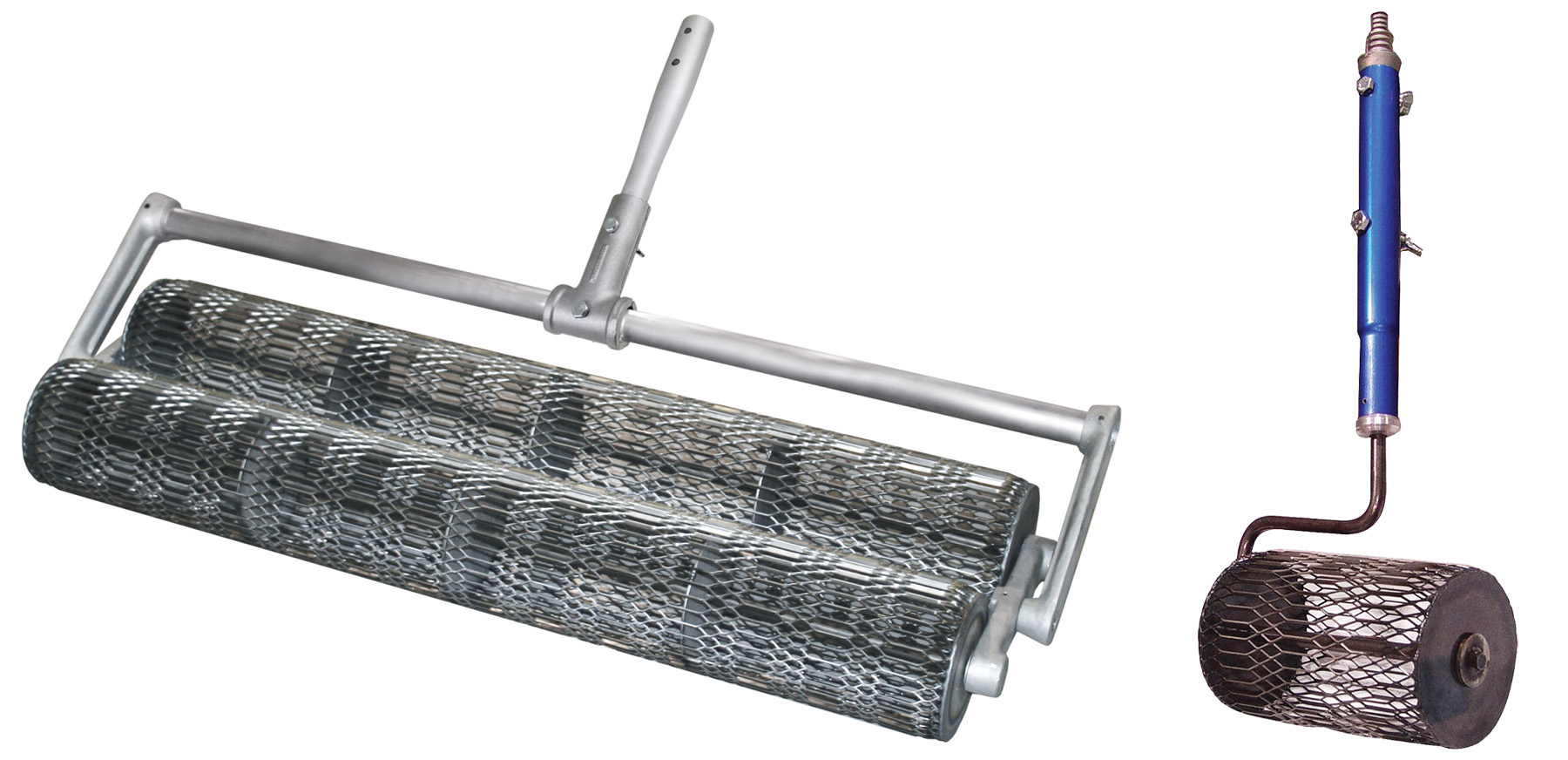
What Is A Roller Tamper?
A roller tamper works just like a jitterbug to push stones down below the concrete surface. However it doesn’t require tamping or walking in wet concrete. Roller tampers are heavy rollers with a grate like surface that push aggregate down simply by rolling them over the slab’s surface. The entire process can be done from outside the slab by using long poles. This can be beneficial because there’s no need to step into the wet concrete.
Roller tampers work really well on slabs with a medium slump and aggregate size. But I don;t use them when the slump is very low and/or the stones are large. For large stones and a low slump I recommend using a traditional jitterbug to tamp the stones down by hand. Low slump concrete and larger stones need more force to push down than the roller provides.
If you’re working with a medium to low slump concrete with mid to small size stones, a roller tamper is a good choice. They’re easier and faster to use and you don’t have to walk in wet concrete. However they’re more expensive than a jitterbug and you need long float poles. But luckily they’re the same poles used for a bull float and most masons already own them.
Like jitterbugs, roller floats come in different sizes. The main roller float size is 48 inches wide. I recommend using the 48 inch model for the majority of the work and the small 1 foot model for hard to reach areas and detail work.
Summary: What Is A Concrete Tamper?
A Concrete Tamper, a.k.a. Jitterbug, is a hand tool that pushes the coarse aggregate (stone) down below the surface which consolidates the concrete. Tamping is one of the last finishing steps masons do to a concrete slab just before troweling and floating the surface smooth. It’s done to compact low slump concrete mixes or mixes with large stones while it’s still wet. The process makes concrete stronger and more durable with a smoother surface. If tamping is not done when required, the concrete could be weaker, less durable and stones could show on the surface. But tamping isn’t needed on concrete with small stones or high slump because the aggregate sinks naturally.
Masons stand in the wet concrete wearing rubber boots and pat the surface repeatedly with the tamper. Tamping is done in straight lines up and down the slab similar to cutting grass. When one row is complete, masons start the next row. This is repeated until the entire slab is tamped at least once. If sections need more tamping it can be done again, but typically one pass is enough.
As masons tamp and walk through the wet concrete, they cause depressions with their feet. These voids naturally fill back in and level off as the surface is tamped.
Roller tempers are also available which are a bit easier to use but less effective on some concrete. The advantage they have when compared to traditional jitterbugs is that you can tamp the concrete while standing outside the forms.
If you have any questions or comments about concrete tamping, email any time.

John Mazzuca | About | More Posts |
Custom Home Builder
John Mazzuca is a custom home designer and builder at Gambrick with over 25 years experience in the construction industry. John has designed, built and/or remodeled hundreds of homes, small buildings, and commercial projects. He writes about business, real estate, home building, and household electronics. His work has been featured in Fox Business, Better Homes & Garden, House Beautiful, and more.


